Haoyuan Zhang
MLLM-Enhanced Face Forgery Detection: A Vision-Language Fusion Solution
May 04, 2025Abstract:Reliable face forgery detection algorithms are crucial for countering the growing threat of deepfake-driven disinformation. Previous research has demonstrated the potential of Multimodal Large Language Models (MLLMs) in identifying manipulated faces. However, existing methods typically depend on either the Large Language Model (LLM) alone or an external detector to generate classification results, which often leads to sub-optimal integration of visual and textual modalities. In this paper, we propose VLF-FFD, a novel Vision-Language Fusion solution for MLLM-enhanced Face Forgery Detection. Our key contributions are twofold. First, we present EFF++, a frame-level, explainability-driven extension of the widely used FaceForensics++ (FF++) dataset. In EFF++, each manipulated video frame is paired with a textual annotation that describes both the forgery artifacts and the specific manipulation technique applied, enabling more effective and informative MLLM training. Second, we design a Vision-Language Fusion Network (VLF-Net) that promotes bidirectional interaction between visual and textual features, supported by a three-stage training pipeline to fully leverage its potential. VLF-FFD achieves state-of-the-art (SOTA) performance in both cross-dataset and intra-dataset evaluations, underscoring its exceptional effectiveness in face forgery detection.
WMamba: Wavelet-based Mamba for Face Forgery Detection
Jan 16, 2025



Abstract:With the rapid advancement of deepfake generation technologies, the demand for robust and accurate face forgery detection algorithms has become increasingly critical. Recent studies have demonstrated that wavelet analysis can uncover subtle forgery artifacts that remain imperceptible in the spatial domain. Wavelets effectively capture important facial contours, which are often slender, fine-grained, and global in nature. However, existing wavelet-based approaches fail to fully leverage these unique characteristics, resulting in sub-optimal feature extraction and limited generalizability. To address this challenge, we introduce WMamba, a novel wavelet-based feature extractor built upon the Mamba architecture. WMamba maximizes the utility of wavelet information through two key innovations. First, we propose Dynamic Contour Convolution (DCConv), which employs specially crafted deformable kernels to adaptively model slender facial contours. Second, by leveraging the Mamba architecture, our method captures long-range spatial relationships with linear computational complexity. This efficiency allows for the extraction of fine-grained, global forgery artifacts from small image patches. Extensive experimental results show that WMamba achieves state-of-the-art (SOTA) performance, highlighting its effectiveness and superiority in face forgery detection.
Concept Discovery in Deep Neural Networks for Explainable Face Anti-Spoofing
Dec 23, 2024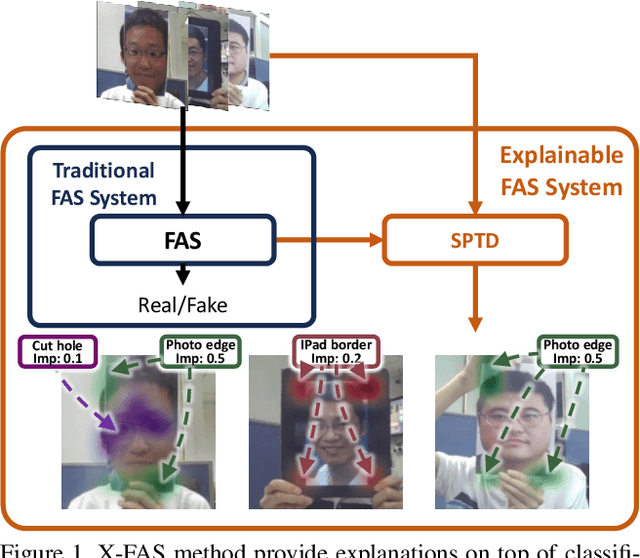
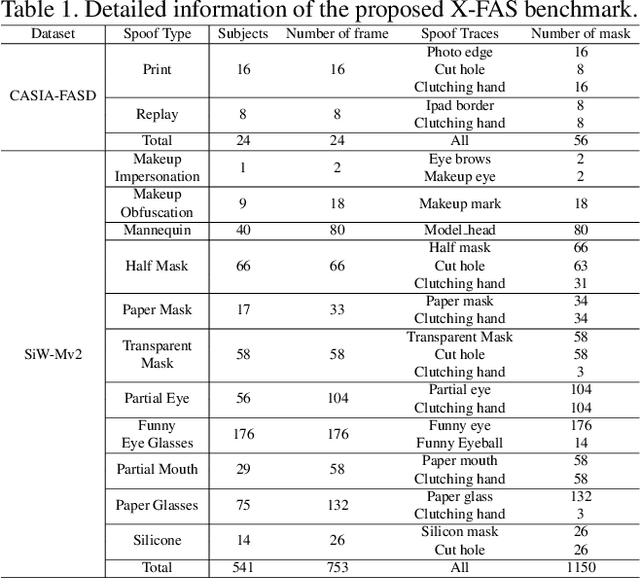
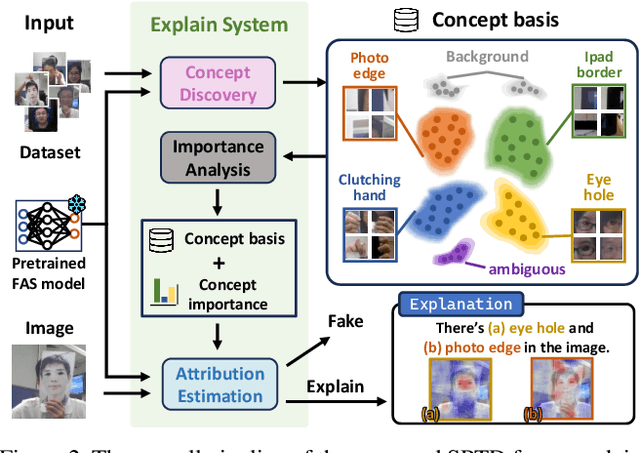
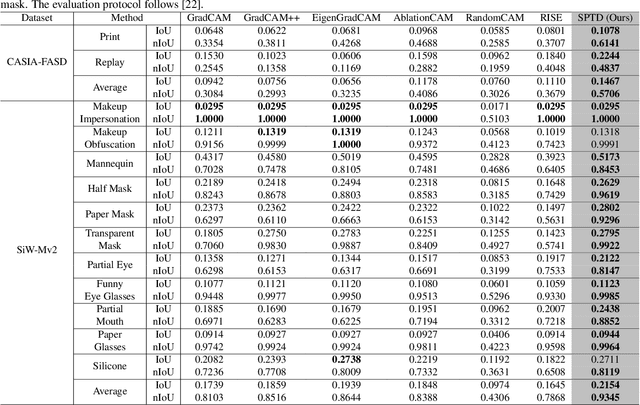
Abstract:With the rapid growth usage of face recognition in people's daily life, face anti-spoofing becomes increasingly important to avoid malicious attacks. Recent face anti-spoofing models can reach a high classification accuracy on multiple datasets but these models can only tell people ``this face is fake'' while lacking the explanation to answer ``why it is fake''. Such a system undermines trustworthiness and causes user confusion, as it denies their requests without providing any explanations. In this paper, we incorporate XAI into face anti-spoofing and propose a new problem termed X-FAS (eXplainable Face Anti-Spoofing) empowering face anti-spoofing models to provide an explanation. We propose SPED (SPoofing Evidence Discovery), an X-FAS method which can discover spoof concepts and provide reliable explanations on the basis of discovered concepts. To evaluate the quality of X-FAS methods, we propose an X-FAS benchmark with annotated spoofing evidence by experts. We analyze SPED explanations on face anti-spoofing dataset and compare SPED quantitatively and qualitatively with previous XAI methods on proposed X-FAS benchmark. Experimental results demonstrate SPED's ability to generate reliable explanations.
Technique Report of CVPR 2024 PBDL Challenges
Jun 15, 2024
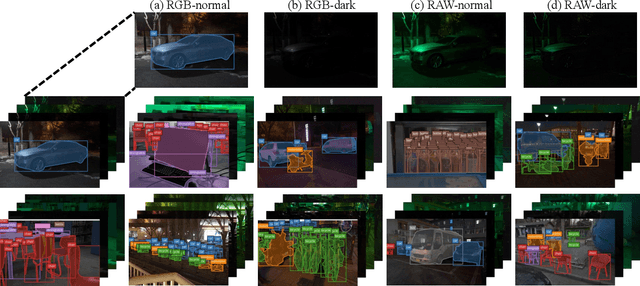
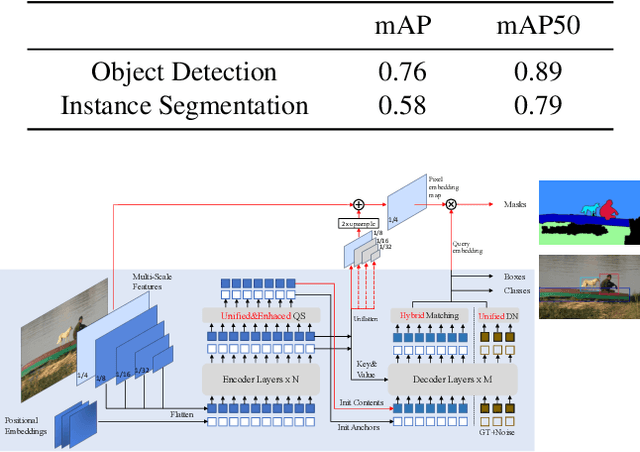

Abstract:The intersection of physics-based vision and deep learning presents an exciting frontier for advancing computer vision technologies. By leveraging the principles of physics to inform and enhance deep learning models, we can develop more robust and accurate vision systems. Physics-based vision aims to invert the processes to recover scene properties such as shape, reflectance, light distribution, and medium properties from images. In recent years, deep learning has shown promising improvements for various vision tasks, and when combined with physics-based vision, these approaches can enhance the robustness and accuracy of vision systems. This technical report summarizes the outcomes of the Physics-Based Vision Meets Deep Learning (PBDL) 2024 challenge, held in CVPR 2024 workshop. The challenge consisted of eight tracks, focusing on Low-Light Enhancement and Detection as well as High Dynamic Range (HDR) Imaging. This report details the objectives, methodologies, and results of each track, highlighting the top-performing solutions and their innovative approaches.
NTU4DRadLM: 4D Radar-centric Multi-Modal Dataset for Localization and Mapping
Sep 02, 2023



Abstract:Simultaneous Localization and Mapping (SLAM) is moving towards a robust perception age. However, LiDAR- and visual- SLAM may easily fail in adverse conditions (rain, snow, smoke and fog, etc.). In comparison, SLAM based on 4D Radar, thermal camera and IMU can work robustly. But only a few literature can be found. A major reason is the lack of related datasets, which seriously hinders the research. Even though some datasets are proposed based on 4D radar in past four years, they are mainly designed for object detection, rather than SLAM. Furthermore, they normally do not include thermal camera. Therefore, in this paper, NTU4DRadLM is presented to meet this requirement. The main characteristics are: 1) It is the only dataset that simultaneously includes all 6 sensors: 4D radar, thermal camera, IMU, 3D LiDAR, visual camera and RTK GPS. 2) Specifically designed for SLAM tasks, which provides fine-tuned ground truth odometry and intentionally formulated loop closures. 3) Considered both low-speed robot platform and fast-speed unmanned vehicle platform. 4) Covered structured, unstructured and semi-structured environments. 5) Considered both middle- and large- scale outdoor environments, i.e., the 6 trajectories range from 246m to 6.95km. 6) Comprehensively evaluated three types of SLAM algorithms. Totally, the dataset is around 17.6km, 85mins, 50GB and it will be accessible from this link: https://github.com/junzhang2016/NTU4DRadLM
Contrastive Positive Mining for Unsupervised 3D Action Representation Learning
Aug 06, 2022



Abstract:Recent contrastive based 3D action representation learning has made great progress. However, the strict positive/negative constraint is yet to be relaxed and the use of non-self positive is yet to be explored. In this paper, a Contrastive Positive Mining (CPM) framework is proposed for unsupervised skeleton 3D action representation learning. The CPM identifies non-self positives in a contextual queue to boost learning. Specifically, the siamese encoders are adopted and trained to match the similarity distributions of the augmented instances in reference to all instances in the contextual queue. By identifying the non-self positive instances in the queue, a positive-enhanced learning strategy is proposed to leverage the knowledge of mined positives to boost the robustness of the learned latent space against intra-class and inter-class diversity. Experimental results have shown that the proposed CPM is effective and outperforms the existing state-of-the-art unsupervised methods on the challenging NTU and PKU-MMD datasets.
SAR-NAS: Skeleton-based Action Recognition via Neural Architecture Searching
Oct 29, 2020



Abstract:This paper presents a study of automatic design of neural network architectures for skeleton-based action recognition. Specifically, we encode a skeleton-based action instance into a tensor and carefully define a set of operations to build two types of network cells: normal cells and reduction cells. The recently developed DARTS (Differentiable Architecture Search) is adopted to search for an effective network architecture that is built upon the two types of cells. All operations are 2D based in order to reduce the overall computation and search space. Experiments on the challenging NTU RGB+D and Kinectics datasets have verified that most of the networks developed to date for skeleton-based action recognition are likely not compact and efficient. The proposed method provides an approach to search for such a compact network that is able to achieve comparative or even better performance than the state-of-the-art methods.
 Add to Chrome
Add to Chrome Add to Firefox
Add to Firefox Add to Edge
Add to Edge